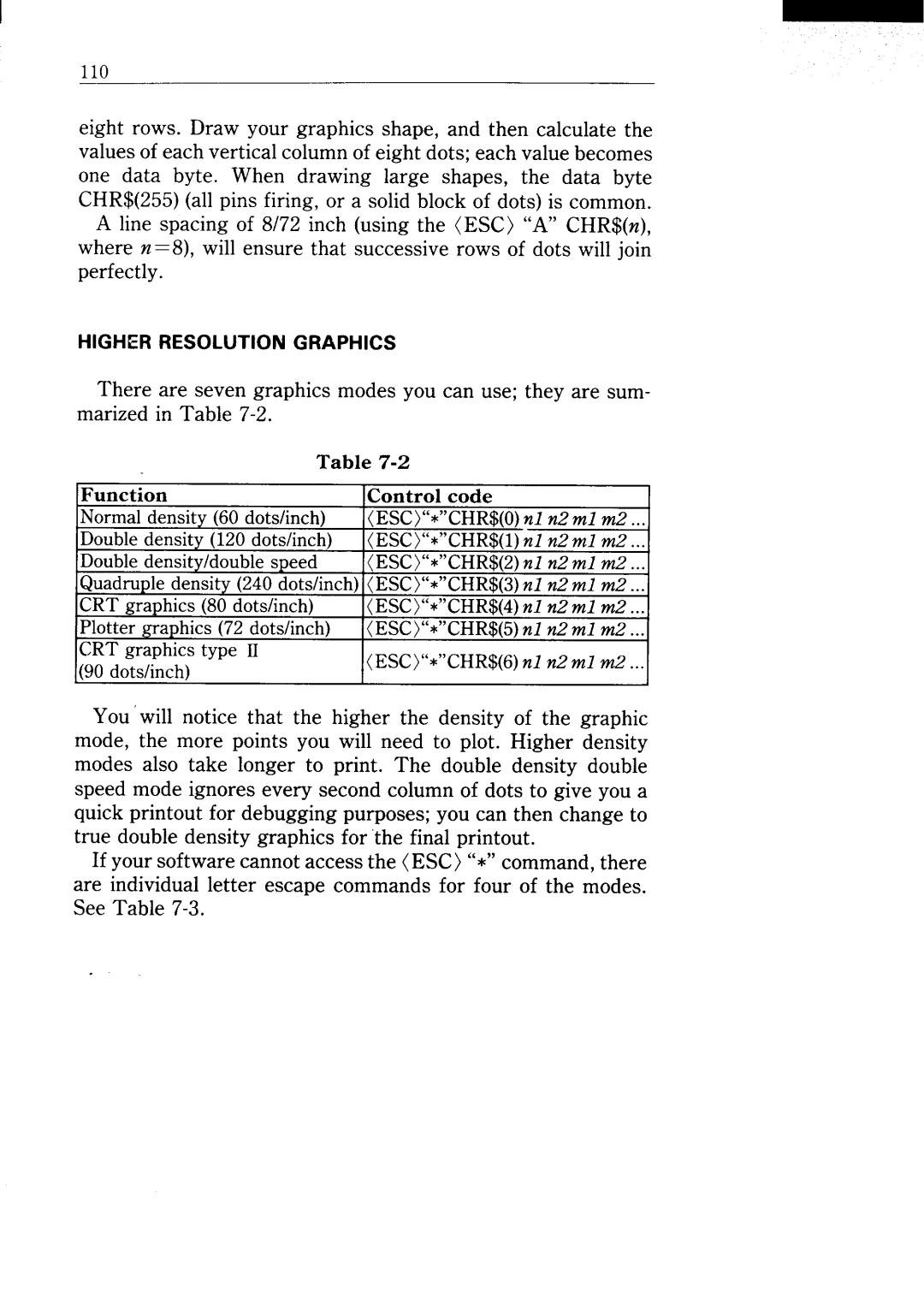
110
eight rows. Draw your graphics shape, and then calculate the values of each vertical column of eight dots; each value becomes one data byte. When drawing large shapes, the data byte CHR$(255) (all pins firing, or a solid block of dots) is common.
A line spacing of 8/72 inch (using the (ESC) “A” CHR$(n), where n=8), will ensure that successive rows of dots will join perfectly.
HIGHER RESOLUTION GRAPHICS
There are seven graphics modes you can use; they are sum- marized in Table
Table
“CHR$(2)nl n2 ml m2 ...~
~rapnlcstype u | (ESC)’’*’’CHR$(6) nl n2 ml m2 ... |
|
You ‘will notice that the higher the density of the graphic mode, the more points you will need to plot. Higher density modes also take longer to print. The double density double speed mode ignores every second column of dots to give you a quick printout for debugging purposes; you can then change to true double density graphics for “thefinal printout.
If your software cannot access the (ESC) “*” command, there are individual letter escape commands for four of the modes. See Table
